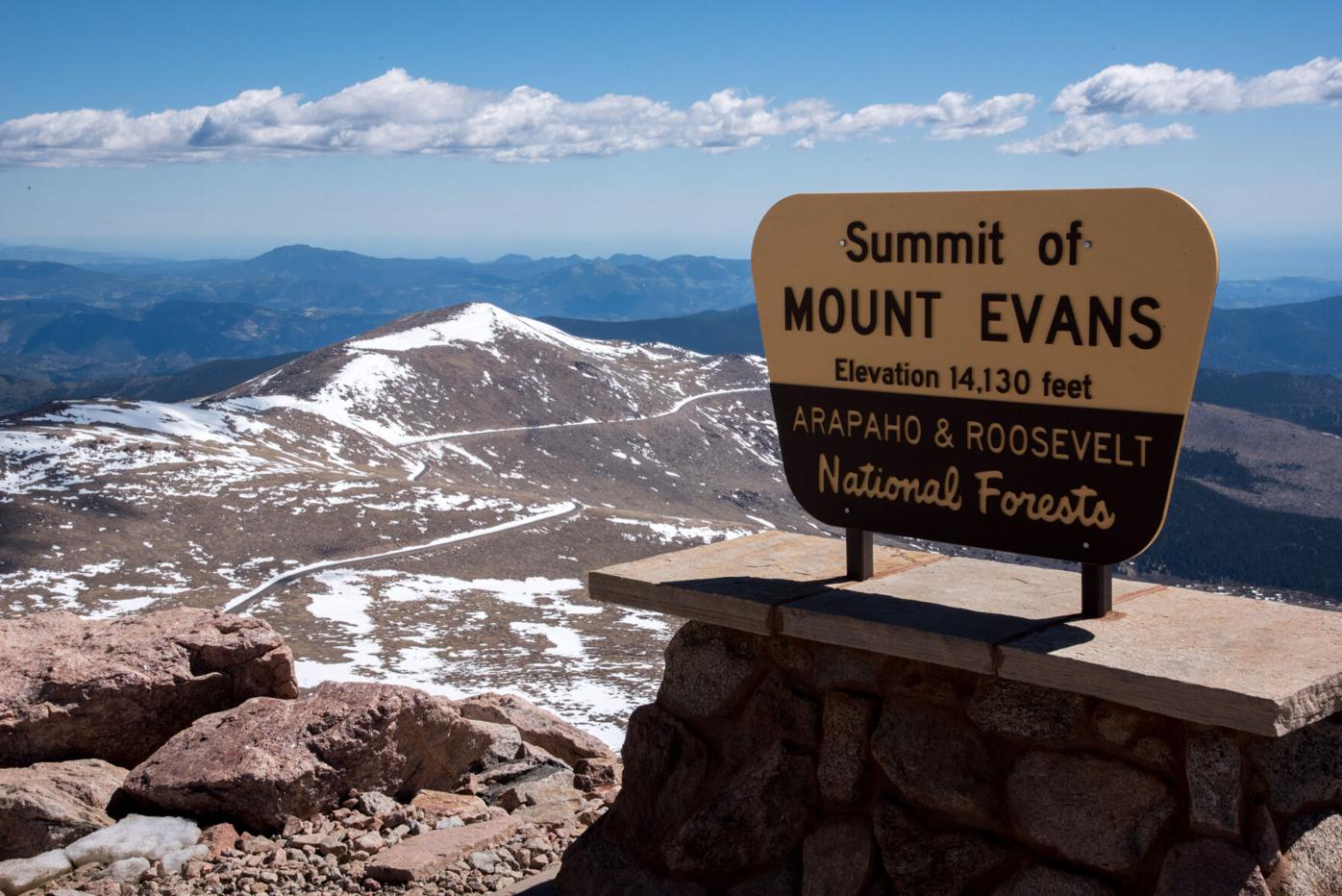Colorado panel begins work on name change for Mount Evans
A Colorado panel is getting ready to take on the most controversial name change in its two-year history: Mount Evans.
The Colorado Geographic Naming Advisory Board, which is tasked with finding replacement names for geographic landmarks with names considered offensive, decided Thursday that it’s ready to start looking at six proposals for the renaming of Mount Evans in Clear Creek County.
The change intends to strip the name of former Gov. John Evans from the mountain because of his involvement in the Sand Creek Massacre in 1864. According to a 2014 report by the University of Denver, his “pattern of neglect of his treaty-negotiating duties, his leadership failures, and his reckless decision-making in 1864 combine to clearly demonstrate a significant level of culpability for the Sand Creek Massacre.”
The first proponent to suggest a name change for Mount Evans was Kate Tynan-Ridgeway of Denver, who suggested Mount Cheyenne Arapaho, to honor the victims of the massacre. That proposal was published by the federal board in July 2018, two years before the Colorado board was reconvened by Gov. Jared Polis after a five-year hiatus.
Under federal rules, whomever first comes up with a proposal has first right to suggest a name. Five other names have been suggested since 2018, including Mount Blue Sky, proposed by Fred Mosqueda, Arapaho Coordinator for the Cheyenne-Arapaho Tribes. Tynan-Ridgeway agreed to that proposal and withdrew hers.
Mount Blue Sky “signifies the Arapaho as they were known as the Blue Sky People and the Cheyenne who have an annual ceremony of renewal of life called Blue Sky,” according to a Dec. 2020 listing with the federal naming board.
Other names suggested for Mount Evans:
- Mount Rosalie, the mountain’s name prior to its renaming in 1895;
- Mount Soule, to honor Capt. Silas Soule, one of the two men who blew the whistle on the massacre;
- Mount Evans, to honor Evans’ daughter, Ann; and
- Mount Sisty, to honor Wilson Edward Sisty (1827-1889), who founded the Colorado Department of Wildlife and Fish, and served three governors as State Fish Commissioner.
The board will next meet on Sept. 22 to begin reviewing the name proposals. Once a name has been approved by the board, it goes on to Polis and with his approval to the federal board for final adoption.
The board also gave a hard lesson Thursday to a group of Cederedge High School students who have worked for more than three years to come up with a new name for Negro Creek and Negro Mesa in Delta County.
In 2019, the county was notified by the federal board that a proposal had been submitted to rename Negro Creek to Hops Creek, in honor of Colorado’s beer-brewing industry. The name of Negro Creek, a nine-mile tributary of Tongue Creek in Delta County, had previously been changed in 1962, along with names for 16 other similarly-named geographic landmarks in Colorado from a name with the N-word.
Amanda Cadorette of Denver submitted the original proposal in October 2019.
Delta County Commissioner Don Suppes contacted the high school to ask them to come up with another name, since hops are not grown in Delta County. Students held a naming contest and came up with Clay Creek, and suggested it could also be used for a nearby mesa.
The board didn’t like the Cedaredge students’ proposal and convened a subcommittee, led by board member and Boulder City Councilwoman Junie Joseph, to come up with another name.
The students still wanted the name they suggested. But Joseph told the board Thursday that after meetings with stakeholders, they settled on the name Reparations, both for the creek and the mesa
Grand County Commissioner Rich Cimino, a board member, noted that the high school had put years of work into the proposal and that he would support Clay, not Reparations. He later voted against the new proposal.
But other board members, including state Rep. Adrienne Benavidez, D-Adams County, supported the proposal put forward by Joseph. The board had explained to the students that they needed to talk to groups impacted by the derogatory name. The impact of names on maps does effect people in the community, noting the name prior to 1962, which she called hurtful and traumatic.
“We can’t ignore that,” she said.
She also blasted the commissioners’ approach of engaging the students to hold a contest, which she said was not the best way to deal with the matter. They should have instead looked at the history of the area, she said.
“Nothing was done to look at the impact on Black families,” she said. Students never reached out to that community, Benavidez added. “They weren’t looking at the things we place importance on.”
“When we look at marginalized or impacted communities, we must put them at the center of the work we do,” Joseph added.
Board member Kathryn Redhorse, who heads the state’s Commission on Indian Affairs, said that it’s important for young people to understand what it means to include and restore, and this process can be used as a model to include diverse communities in the future.
The students were disappointed and discouraged by the board’s decision, according to board member Nicki Gonzales of Regis University. “It was a lesson in how change was made,” but she added that she doesn’t believe it would deter them from future involvement in this kind of work.
The proposal now goes to Polis for his approval and to the federal board for final adoption.





